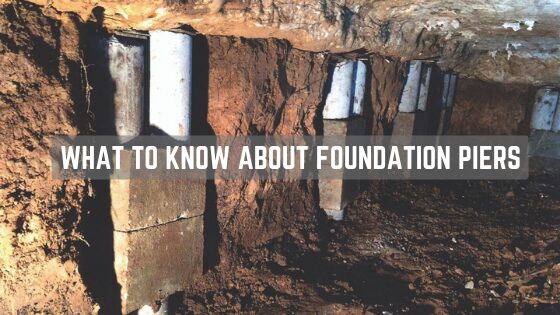If you have just found out that you have foundation issues, you’re probably digging into some research to find the perfect company to do the repairs. After you have spoken with your contractor, you learn that placing piers underneath your foundation will be the best fix. From what you were told, this should permanently fix your issue. But there’s more to know.
The new piers would be well worth the money if they guarantee a sturdy foundation for the duration of your home’s use. However, installing new piers isn’t always fail-proof. There are some things you need to know about foundation piers before you decide on the right foundation repair method.
Why Did the Problem Occur in the First Place?
The first thing you need to realize is that if you do not address the initial cause of the foundation movement, you will have the same problems in the future. You can have the best foundation repair contractor install the best piers on the market and still have issues. Piers are only going to work if there are no other problems with the foundation. Let’s say you have a leak under your home that is coming from old plumbing. The new piers will only last until the water starts to damage them.
Yes, it may take quite some time for this to happen, but why spend more time and money on future repairs that can be avoided by addressing the main cause of your foundation problems? Whatever caused the foundation to move and shift in the first place can certainly damage the new piers once they are installed.
The Work Is Only as Good as the Workers Performing the Repair
Secondly, you need to understand that the piers are only as good as the foundation repair company that is installing them. Piers need to be installed at the right depth in order to do an effective job. There are two types of soil under the foundation of your home. There is what is known as active soil, like clay soil. This is the soil that is affected by the environment surrounding your home. Clay soil will expand and contract depending on the temperatures outside. But the water content can cause the same kind of soil movement. When the soil dries out, it will begin to shrink. It then expands once the weather turns and it starts to rain. To prevent future foundation movement, the piers need to be installed far below the active soil to where the inactive soil is located.
What is Inactive Soil
Inactive soil is soil that is stable and not affected by environmental elements. The foundation piers need to be installed at the same depth into the inactive soil as there is active soil. For example, piers will need to be buried 12 feet into the inactive soil if there is 12 feet of active soil above it.
The Many Factors that Can Lead to Future Issues
The last thing you need to understand about foundation piers is this: you may have fixed the cause of the foundation’s failure; you may have had new piers installed as well; the piers were installed by a reputable company; they were installed at the right depth. But this does not mean you will not have issues in the future. There are environmental and structural issues that can happen and cause the piers to fail in the future.
For instance, strong winds can uproot one or more trees located near your home. This can cause the soil conditions to change due to the water under the foundation not being absorbed at the same rate as it did when the tree was there. Since there are fewer trees to absorb the water from the soil around your foundation, the ground underneath your home could become saturated with water. Waterlogged clay soil could cause differential settlement. This is just an example. Many other things can happen to destroy your home’s foundation.
It’s important for you to understand the way your foundation works and the issues that you may face if something goes wrong with it. You need to be aware of what is going on with your home. This will require you to perform regular inspections on both your home and its foundation.
You will need to do some reading and educate yourself on the best way to do repairs should you find issues during the inspections. You may have minor settling and not need to do anything except monitor the situation. The worst-case scenario is that you will need to have the foundation piers replaced.
This is why companies that offer a lifetime warranty on their work are valuable. At Allied Foundation, we stand behind our work. We offer a lifetime, 100% transferable warranty on all the foundation work we do.
You and your family are worth the time and effort it will take to learn all there is to know about the foundation of your home. After all, this is a home that you and your family will have for years (possibly decades) to come. Make sure the foundation of your home is as strong as the foundation of your family!

